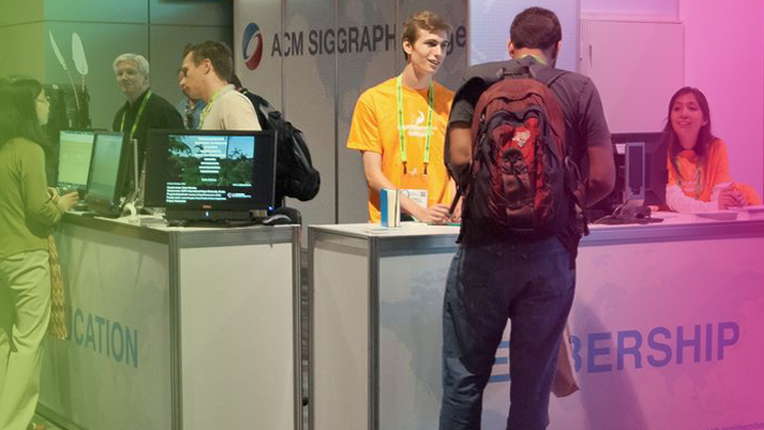SIG Elections
- General
- A. Options for Elections
- B. Guidelines and Timetables for SIG Elections
- C. Extension of Terms
General
Until recently, most SIG elections were held in odd-numbered years, with new leadership chosen for two-year terms. Most SIGs allowed extension of the leadership for another two-year term, without election but with notification of SIG members of that intention.
Recent experience of many SIG leaders has been that two years is too short a term. Often, the first year of a SIG officer's term is primarily spent in orientation and becoming comfortable in all the arenas in which a SIG Chair, in particular, operates. With a two-year term, that is the point for setting in motion the process for the next election.
Consequently, many SIGs have changed their bylaws in recent years in order to change the length of term for their officers. Many SIGs now have three-year terms, with or without extension, and a few have four-year terms.
SIG elections are determined by the ByLaws of each SIG. SIG officers (as well as all other ACM elected positions) have terms beginning with July 1, and ending June 30.
A. Options for Elections
The SIG Governing Board (SGB) in its meeting on March 19-20, 2004, reviewed a number of different election models for SIGs to consider. At that point, the prevailing model for SIG elections was one or more specific positions (Chair, Secretary, etc.), for which at least two candidates were required, plus n candidates for at-large Executive Committee positions, for which at least n+1 candidates were required.
A number of alternative models were suggested for consideration, including:
Within the standard model, two different voting alternatives are possible. First is "plurality voting," the familiar pattern of voting for one candidate per position, and the candidate with the most votes wins. The second option is called "approval voting", with SIG members voting for zero or more candidates per position, with the candidate with the most votes winning (usually the winner also has the majority of votes). A third option is "preferential voting", with voters ranking candidates, and those ranking highest named as winners.
A second model of voting was reviewed, election by slate. In this option, at least two slates of candidates are proposed, each slate having sufficient candidates for all open positions. Specific responsibilities for the individuals can be designated by the nominating committee, or can be decided after the election. Individuals would be allowed to appear on more than one slate, and this strategy could be modified for specific needs.
Another model is to nominate at least two candidates for a Chair-Elect position, with that person automatically becoming SIG Chair at the next election.
A Chair + Board option for a SIG elects the SIG Chair and at-large members of the Executive Committee or Executive Board, who determine among themselves after the election which will hold the specific positions of Secretary, Treasurer, etc. In this model, at least two candidates must be nominated for the position of SIG Chair, and n+1 candidates for all other positions.
Quicker Routes to Changes in SIG Bylaws. As noted above, changing the pattern for voting for SIG officers requires changes to the SIG Bylaws. In its meeting in February 2007, the SGB put into place some quicker procedures for making some of the more common changes being requested for SIG bylaws. (See the section on SIG Bylaws for details.)
B. Guidelines and Timelines for SIG Elections
SIG elections are overseen by ACM staff, and occur in April through June of election years. The winner of the elections is decided by the vote of the majority of the SIG members voting, unless a different system is set out in the bylaws of a SIG.
Candidates for SIG officers are required to be members of both the SIG and of ACM. ACM Headquarters conducts every SIG ballot and referendum, following procedures approved by the SGB and the ACM Executive Committee.
The general timeline for SIG elections is:
- In September/October of the year preceding the election, a nominating committee is established by the SIG.
- The nominating committee works October through December finding candidates for the open positions. Each position must have two candidates (unless otherwise designed in the SIG Bylaws), and for at-large positions (where members are voting for more than one candidate), there must be at least one more candidate than positions to be filled.
- Candidates for SIG elections are announced in the January and February issues of Communications of the ACM, and in SIG newsletters or other communications.
- Voting occurs from April through early June. Voting is generally done electronically, with current SIG members emailed links to voting materials online and specific passwords enabling them to vote.
- Announcement of the winners of SIG elections is in late June.
- Terms of office begin July 1.
C. Extension of Terms
SIG Bylaws may permit extension of terms for SIG leaders, meaning that the current officers and board all agree to serve a second term in their current positions.
In SIGs where extension is permitted, the SIG leaders consider this question and make their request to extend their terms in September before the year when elections are to be held. Note that all elected positions must agree to the extension of terms. This decision is communicated to the SGB Executive Committee.
On approval of the SGB EC, a notification is sent to the membership of the SIG by ACM, announcing the proposed extension of the terms of the current leadership. Those opposed to the proposed extension are given a deadline by which time to state their opposition.
If there is objection by 1% of the SIG members to the extension of terms, an election must be held that cycle.
Join an ACM SIG
Network with like-minded professionals and enjoy unique opportunities to share technical expertise and first-hand knowledge of the latest trends.

Virtual Conferences: A Guide to Best Practices
In March 2020 ACM formed a Presidential Task Force (PTF) to help conference organizers transition their events to online. The PTF is working on a guide to offer practical advice and shed light on the largely unfamiliar territory of online conferencing.
The report, available here, includes pointers to a live document with additional resources. We welcome comments, suggestions and experience reports from the community.
